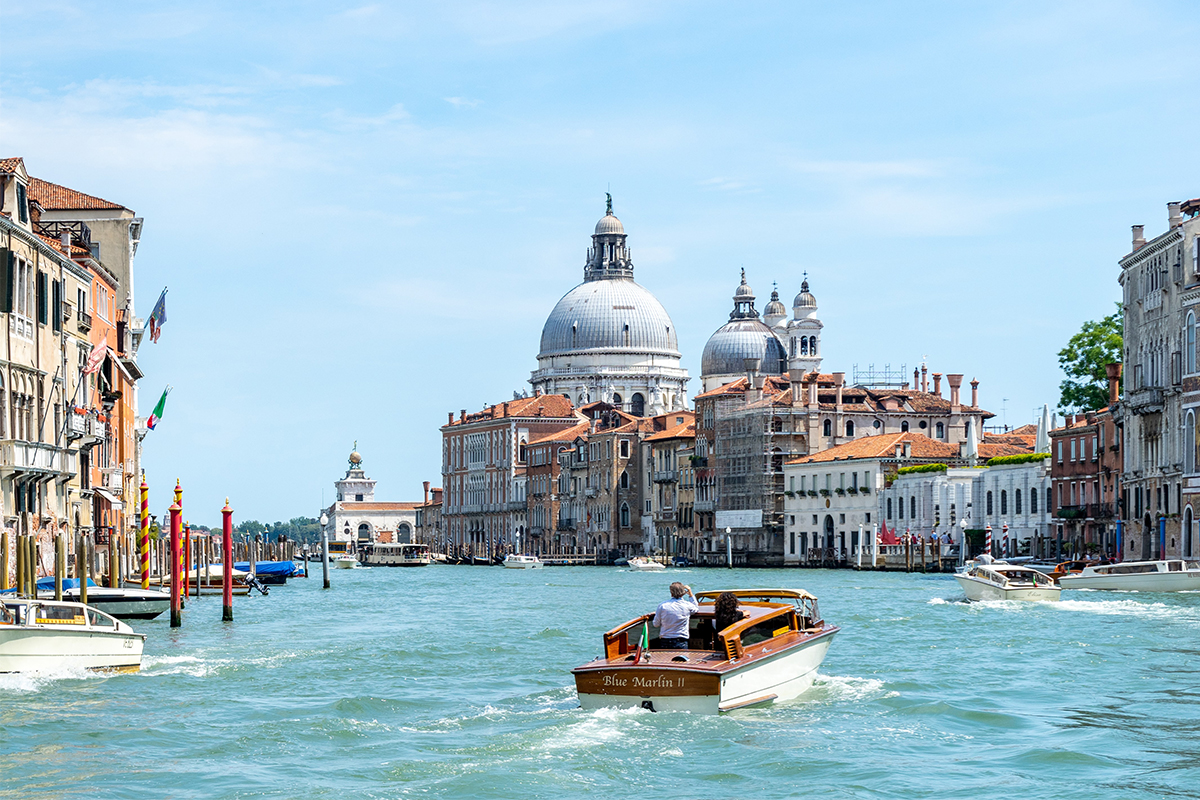Two summers ago, we interviewed an American photographer named Travis Keyes about a viral before-and-after photography project in Venice. This was well before the arrival of the pandemic, back when the city The New York Times has called “the most beautiful built by man” was regularly welcoming 50,000 tourists a day — just a few thousand less than the historic old city’s population of permanent residents.
Keyes’s photos showed the other side (literally) of all those pitch-perfect Instagram posts. There are gondolas and 13th-century palaces, yes, but also cruise-couples wielding selfie sticks, massive lines to get into any of the historic sites, and far too many pop-up restaurants where the menus are laminated and feature photos of the “food.” In high season, when the tourist count climbs to 80,000, getting around the canals is absolutely untenable. It’s a big reason, Keyes explained, why most native-born Venetians prefer to solely work in the city, or have abandoned it completely.
Then COVID happened, and Venice — even with all the pain the pandemic brought to Italy — was able to take a deep breath. Much was made of how clean the canals became in the first week of quarantine as an example of the negative impact humans have on the environment. This was actually a misleading story; it was the constant movement of boats kicking up silt that gave Venice’s canals their murky green color. But it was an illustrative point, regardless. For the first time in a long time, Venice was able to hit the pause button and think about what kind of city it wants to be.
Without a doubt, that future needs tourism. The industry reels in $2.3 billion a year, and the travel shutdown in 2020 definitely hurt. (By year’s end, just 1.34 million tourists made it to the Venetian Lagoon, as opposed to 2019’s total of 5.5 million.) But in drafting a post-pandemic plan, Venice has proposed a far more measured approach, and will start operating similar to a national park. In a recent announcement, city officials confirmed that they will be instituting an idea that’s been kicked around in the past: entrance fees.
Every visitor to Venice will now have to book a slot ahead of time, pay a fee and enter the city through actual turnstiles. In high season, that cost will be $12. In lighter months, it will drop to as low as $3.50. The most popular portion of the year (June through August) will have strict capacity limits on arrivals. There is one way to bypass the entrance fee, however — stay the night in a local hotel. It’ll likely even out in city-issued taxes on your room’s bill anyway, but the appearance of not having to pay is intended to encourage meaningful trips to the city, not daily drive-bys where tourists stuff the streets, point their phones at beautiful things, and then cruise away.
Oh, and that’s another thing. When we talked to Keyes, his top recommendation for Venice combating overtourism was “limit the cruise ships.” The photographer said: “That is a fairly recent development — that they started letting all these massive cruise ships in there with the hordes of people … they’re letting too many people into a city that was never designed to hold that many people.”
There’s good news on that front. Earlier this month, Italy named the waters around Venice a national monument, and officially banned any ship “that weighs more than 25,000 tons or is longer than 530 feet” from entering. Small ships are still permitted, but the days of sunburnt masses descending on the city are over.
Will all these measures work? We certainly hope so. Only time will tell, and it could be a while before travel starts humming again, due to the Delta variant. But for a city that’s struggling to survive — some climate experts fear the islands could be underwater by 2100 — any attempt to cut back on human impact is critical. As Fran Lebowitz once said: “If you read a lot, nothing is as great as you’ve imagined. Venice is — Venice is better.” Here’s to keeping it that way.
This article was featured in the InsideHook newsletter. Sign up now.
